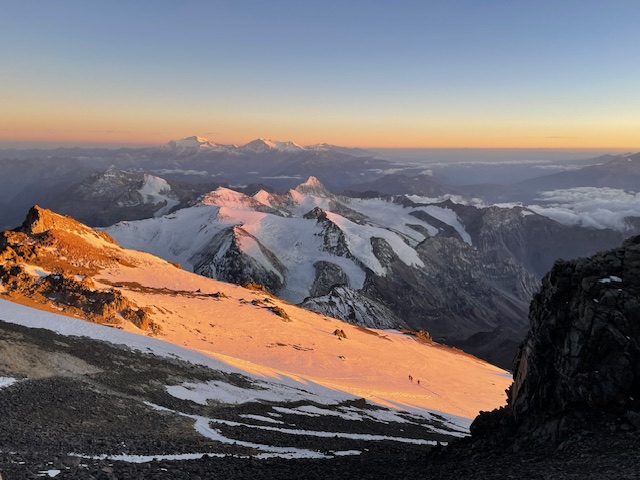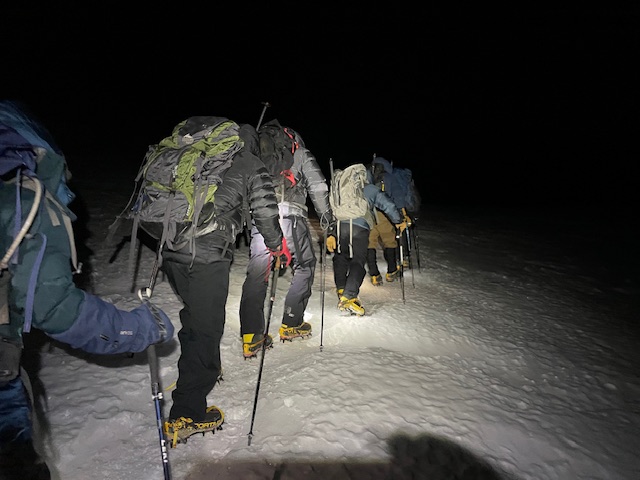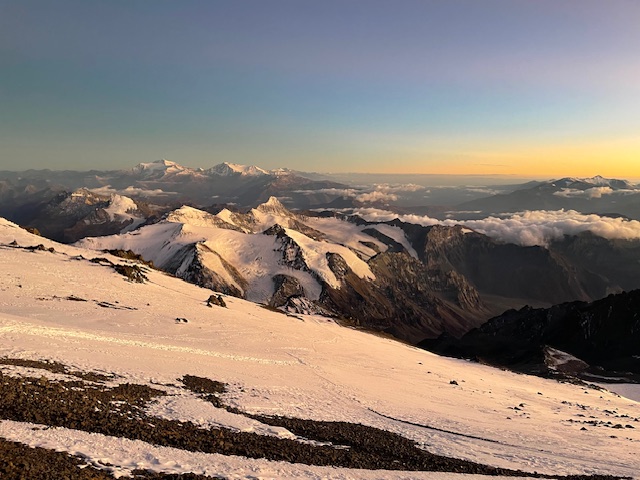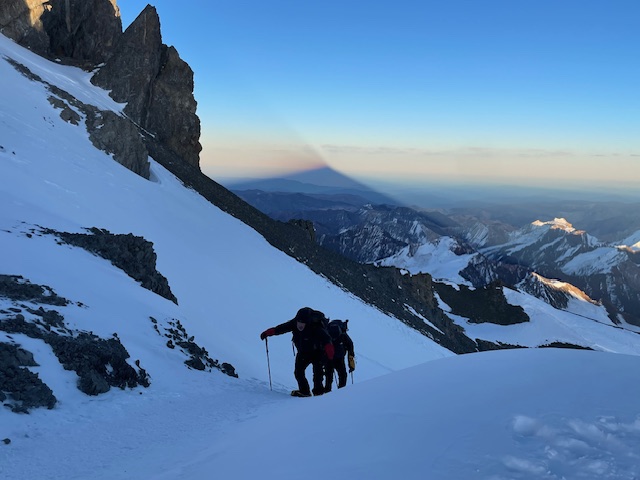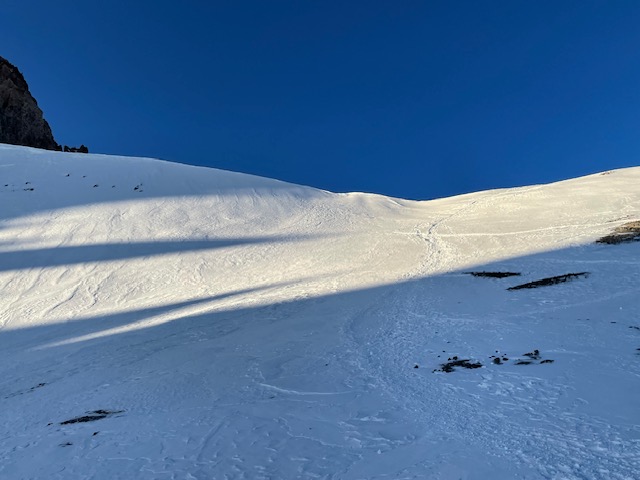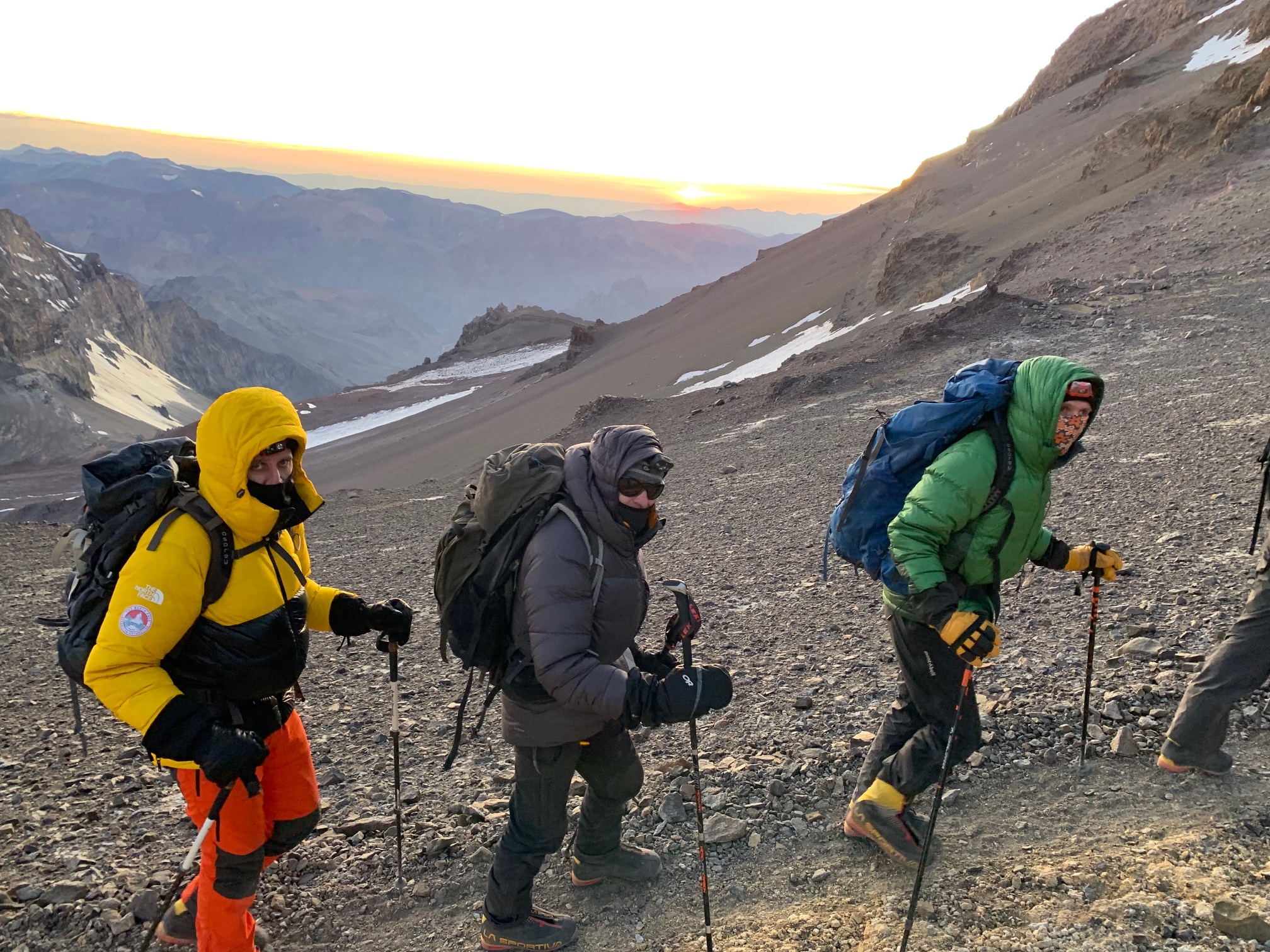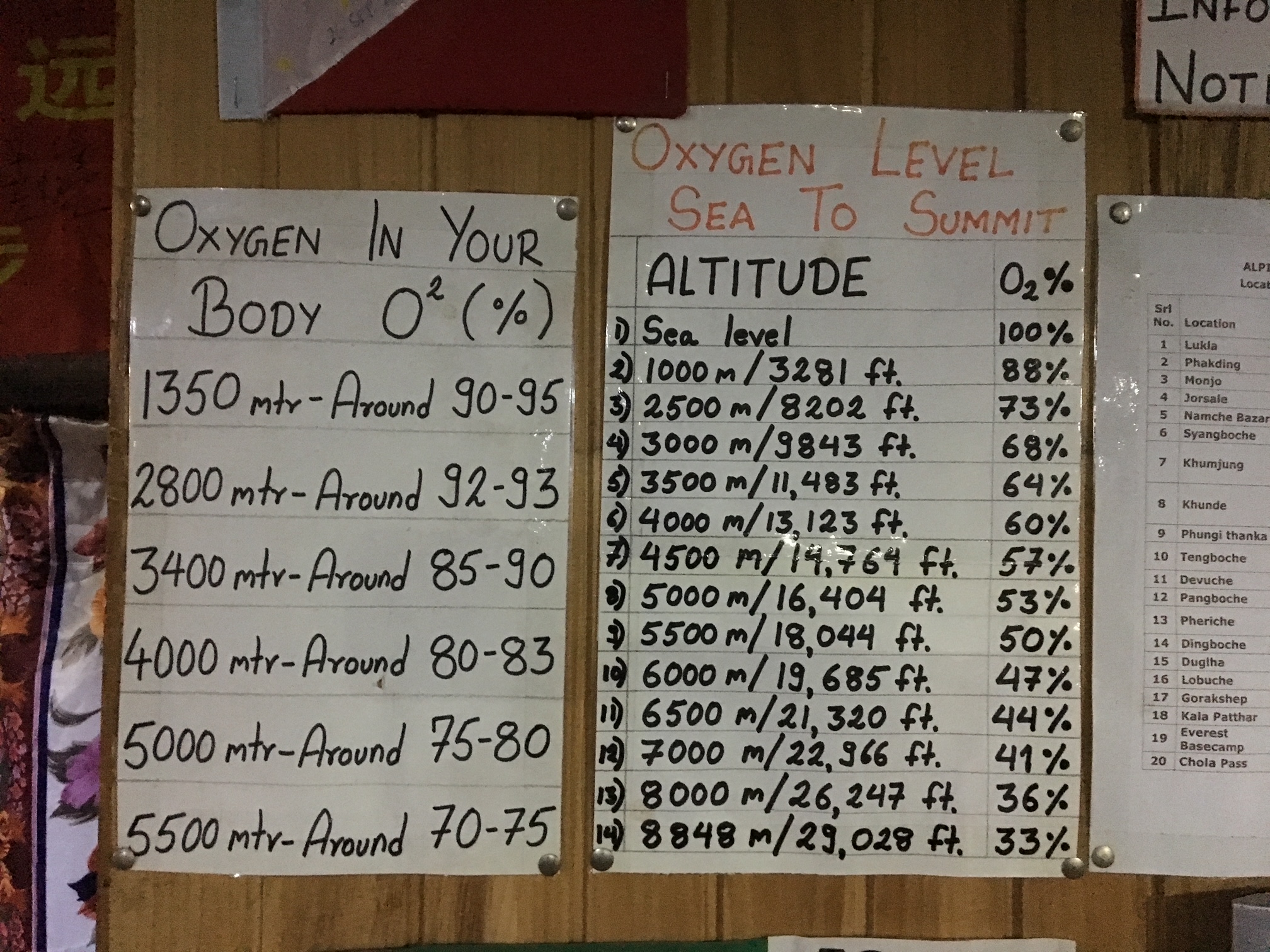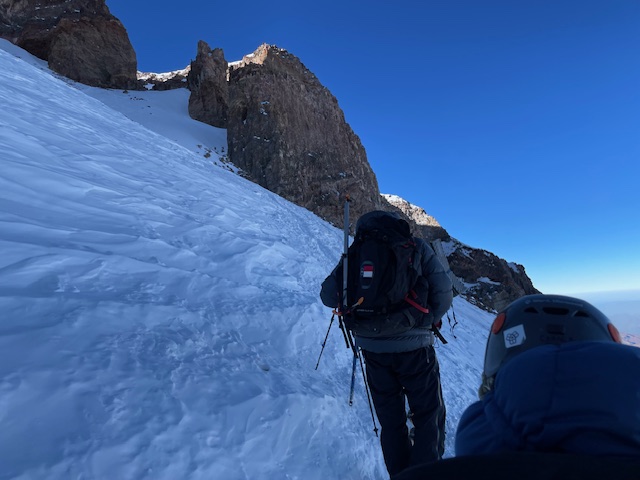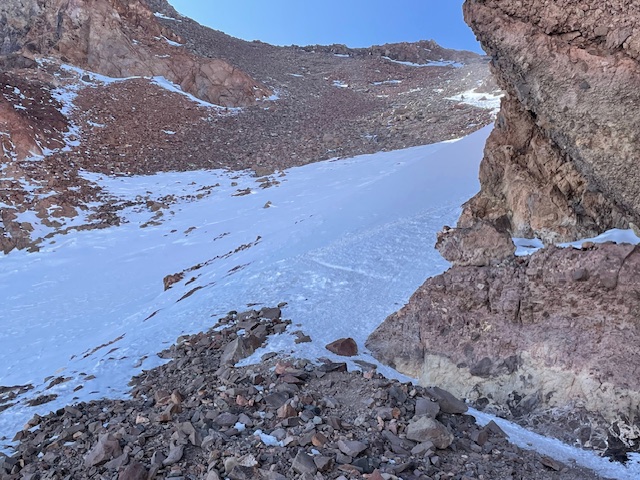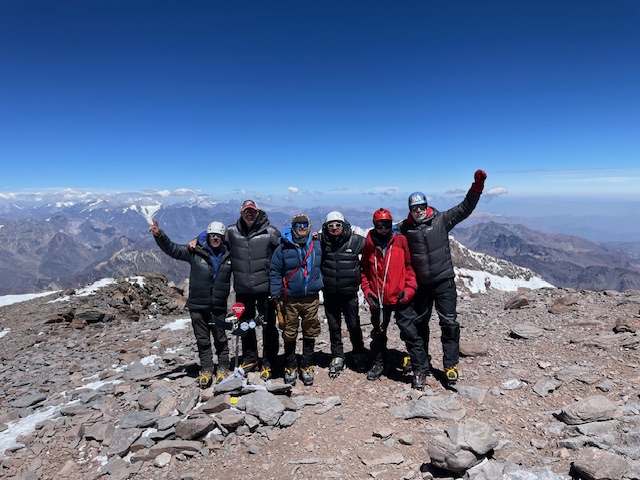I have climbed Aconcagua over ten times and I can tell the summit night on Aconcagua is not easy. Carrying heavy loads from camp to camp at high and extreme altitude can take it’s toll on your body and then you have to take on the summit challenge. Contact us and learn more about climbing Aconcagua and check out our upcoming trips.
Everything Comes Down to Summit Night and Day on Aconcagua
The months of intense physical preparation are over. Summit success on Aconcagua comes down to this 12 hour summit push. It normally takes 8 hours to reach the summit and another 4 hours to return back to Camp Colera. It is important to be patient, relaxed and focused on each hour as you move closer towards the summit of Aconcagua. Slow and steady wins the race.
What Time do we Start Summit Day at on Aconcagua
Normally our Summit day begins at 3am or 3:30am. We wake up, start drinking water, get dressed and have breakfast. The guides will prepare breakfast and boil water for you to bring with you. We’ll generally leave camp at 5am and hike the North Ridge to Independencia a small old broken wooden box positioned at approximately 21,400 feet. It takes 2 hours 30 minutes to reach Independencia.
From there, we’ll traverse the West Face past the finger, continuing the traverse to the cave. After a break at the cave, we move into the steepest part of the summit attempt called the Canaleta. The Canaleta is an 800 foot couloir that leads to the summit ridge. From the cave to the summit can take 2 hours.
How Long Does it Take to Reach the Summit
It should take you 8 hours to reach the summit of Aconcagua from Camp Colera. We have had some groups make it in less time, but it is important to pace yourself. You will need all your energy for the descent.
The descent of Aconcagua should take 4 hours. It important to manage every step in the Canaleta and back across the traverse. You need to keep moving slowly back down. No earphones on this section and stay together as the weather can change quickly.
What is the Success Rate on Aconcagua?
When you arrive on the side of Aconcagua, it becomes all about the weather. The reasons the summit success rate is 30% is mainly down to the challenging weather. The winds are unpredictable and challenging at the best of times. While weather is a major consideration, many factors like, lack of physical preparation and acclimatization also play their part. The weather, specifically high wind are the reason the success rate is so low.
Block it all out!
It’s time to focus on 3 things as you move high on Aconcagua. Firstly, it is important to manage your footwork. By taking small, controlled movements you can limit the amount of stress on your legs, intern conversing as much energy as possible. The guides will set the correct pace to safely reach the summit and get back down again.
Keeping your heart rate lower is extremely important as you will need to conserve energy for the way down. Secondly, you need to focus on your breathing. Deep breathing fast in through your nose fast and out through your mouth is the key to success. This breathing technique is be used consistency to force oxygen into your body. I swear by it. Finally you nee to stay present. Don’t worry about the traverse or the Canaleta there will be plenty of time to focus on those challenges when they arrive.
What are the Best Month to Climb Aconcagua?
The best months are the only months you can climb Aconcagua. These Months are November, December, January, February into early March. Within these months there is no one month that is better than the other. The weather on Aconcagua changes from week to week, day to day and never the same as the year before. Aconcagua is extremely unpredictable. There can be days of 80+ mile an hour winds and the mountain can close down for extreme winds making it unclimbable.
How cold is it at the top of Aconcagua?
The temperatures on the summit will vary from trip to trip. When you start off on the summit attempt the usual temperature is anywhere from -15C/ 5F and go as low as – 30 C/ – 22F. I have been on the summit when the temperature was -25C/ -13F and -5C/ 23F. Conditions. Be prepared for polar conditions.
What is the Oxygen Level on Aconcagua?
The summit Aconcagua is 6,962m/ 22,841 feet above sea level. At this height, the air pressure (and the amount of oxygen it contains) is less than half that at sea level. To be precise you are working with 41% of what is available at sea level. Climbing to the summit of Aconcagua has been said to be comparable to ‘working with only one lung’.
Reasons to Climb Aconcagua During the day
The main reason to be high on the mountain during the day is managing the cold temperatures. The other main reason is to have visibility on more challenging terrain where there is potential for rock fall high on the mountain.
Our Approach to Summit Night on Aconcagua
With over a decade of experience summiting Aconcagua, our team has honed the ideal approach for summit night, ensuring safety and success. Weather permitting, we commence our ascent from Camp Colera.
Our strategy is grounded in thorough acclimatization, primarily achieved by spending ample time at lower altitudes, particularly having four nights in Base Camp and a full rest day at Camp 2.
We like to move for 1 hour then rest, then another hour then rest. We do this for 3 hours. Higher on the mountain we take breaks every 30 minutes and on the traverse and Canaleta we can stop every few minutes to regain strength and oxygen to move forward.
Our schedule aims to reach the cave after 5 hours of hiking. We like to arrive there by 10am. We will rest and prepare for the final ascent to the summit of Aconcagua.
Navigating High Altitudes on Aconcagua
At around 3am it’s time to rise, prepare gear, and begin hydrating. We encourage gradual water intake, aiming for at least 2 liters before departure.
By 3:30am, a shallow breakfast awaits. It is important not to eat too much. After breakfast you need to prepare for the summit night. It is important to refill your water supplies with boiled water for the upcoming night and day. Some climbers prefer carrying two Nalgene bottles (equivalent to 2 liters) plus a thermos with another liter for the summit attempt, though hydration levels should remain a personal priority throughout the journey to the summit and back to Camp Colera.
Ascending Towards Aconcagua’s Summit
Around 5am, our ascent to the summit commences. Our pace targets a vertical gain of 150m/492 feet per hour. We will gain more than this in the first part of the summit night and less on the back end of the ascent to the cave and Canaleta to the summit of Aconcagua. Maintaining a disciplined pace and routine throughout is important.
Each hour, we halt briefly to hydrate, snack, and attend to personal needs, ensuring efficient progress while insuring safety of the team. As we approach elevations exceeding 6,600m/21,654 feet, more frequent stops may be necessary due to reduced oxygen levels.
The final push towards the summit, particularly the ascent through the Canaleta, demands focused breathing and steady progress. Upon reaching the top of the Canaleta, we will take multiple brief stops to catch our breath until we reach the true summit of Aconcagua.
Descending Safely from Aconcagua
Following a successful summit, our team regroups for the descent to high camp, approximately a 4-hour journey. Descending the Canaleta and crossing the traverse needs to be slow and steady and once we get across the traverse we can move a little quicker. Continually moving down remains crucial for safety so we can get back to camp by 5pm.
Upon reaching high camp, climbers are afforded the option for dinner and then time to sleep. We will try and sleep until early morning the follow day and then descend further down to Plaza de Mulas Base Camp 4,390m/ 14,403 feet. The descent to Plaza de Mulas, presents its own challenges, requiring resilience and determination.
Connect with the Experts
For more information on our Aconcagua expeditions and to embark on your journey to the roof of the Americas, reach out today. With a track record of guiding over 1,000 climbers to the summit, we’re committed to helping you achieve your goals. Explore our comprehensive guide to climbing Aconcagua for essential tips and insights.


